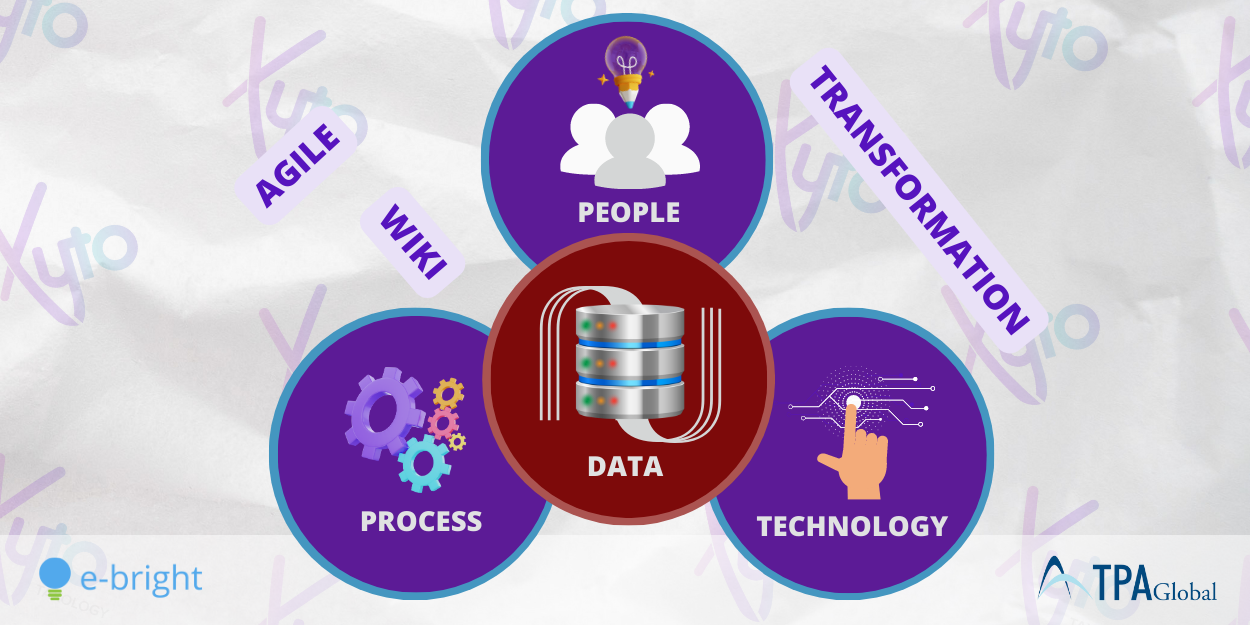Part 2 of 5: Key Concepts in the Future of Tax
Cliché Busting: The Substance Behind the Sound Bites
Part 2: The Essence of Transformation
Of the five concepts under review, perhaps transformation is the most high profile, but also misfires the most. That’s a shame because it’s vital to avoiding disruption and succeeding in the digital world.
Almost every tax technology effort, or systems project with a tax component, is either named “transformation” or has transformation as a stated objective. But once the rubber hits the road, they rarely stay on track.
Instead, they kick off as automation initiatives or application integration projects (such as an ERP rollout), where the work typically lands with IT or an external partner. The trouble is that this does not deliver transformation.
To understand why, let’s start with a definition of transformation.
A transformed state exists only when the end state bears little or no resemblance to the start state, for example, as in nature when a caterpillar becomes a butterfly. In the same way with digital transformation, it only occurs once all four of its main components – people, process, technology and ‘data’ – are fundamentally altered.
Traditional technology, IT and automation projects fall short because they leave two critical components behind without meaningful change:
People – who after the project, typically go back to the work they did before; and,
Data – remains undefined, undervalued, poorly governed, and subservient to process.
As always, people will argue differently. For example, when challenged they will say, “but we trained our people in new software”, or “we’ve put data quality measures in place”, but when you scratching below the surface, these paintjobs are more likely to actively suppress real change than cause it.
That’s because true digital transformation has an entirely different quality about it. For starters, transformation is strategic, while traditional technology, IT and automation are tactical. It’s also unfamiliar to most (even in IT!), and yet it’s the only way to truly unleash the towering value proposition of digital capability and make the tax profession comfortable with itself again.
So, what are the key features? Firstly, data outranks automation as a source of value. Secondly, automation is no longer about replacing humans with machines – instead, the main purpose of automation is to support the data model, especially for knowledge based industries like tax.
This leads to a place where technology complements upskilled humans, who no longer fear being disrupted by it. In fact, they learn to accept their jobs cannot be done without it and start to fully embrace it. Ultimately, they become fundamentally recalibrated and redefine themselves by their close relationship with technological tools and the rich data platforms they support.
As we said, like caterpillar to butterfly, transformation impacts everything. Nothing escapes. For example, HR must now recruit, retain, and motivate an entirely different kind of person; and the legal department can forget scouring software license agreements for liabilities and risk, because technology that complements humans is better suited to the simpler subscription model.
But herein lies the issue. Full digital transformation is so different that it’s just too much for most people and corporate cultures to swallow. It intuitively feels wrong even when it’s not, and quite frankly, can be terrifying. So, our recommendation is to not even try! Let me elaborate on that.
Basically, transformation is not a project, and it will fail if you try and run it that way. Instead, it’s the product of a series of specific actions taken over time that cannot be forced. Here’s the formula:
Vision + Strategy + Skills + ∑(innovation / time) => Transformation
Read as, “Vision plus Strategy plus Skills plus the sum of innovation efforts over time will lead to a transformed state, where Transformation is not a destination but the way of being at the end of a journey.”
Transformation cannot be done all at once because, as stated in Part 1, the outcome cannot be known in advance. Partly for this reason, we at Xyto avoid mentioning “transformation” except to leaders and visionaries. Managers and pragmatists still want transformation, but can’t understand why it’s not a normal project. Hint: this is where the proper use of Agile comes in.
Instead, we’ve devised a combination of education, methods, coaching, upskilling, messaging, influencing, leadership and partnering capabilities to engineer effective innovation journeys with the right trajectory that fit in with existing tasks and projects. Meaningful, intentional, and balanced action every day is the key.
In Part 3, we look at Data, and reveal why tomorrow’s greatest asset is often today’s greatest liability, and what tax can do about it.
Taxology Part 1: Why Agile Matters
Key Concepts in the Future of Tax – A five part series
In one sense, taxology is about delivering tax technology with built-in digital future-proofing.
And at Xyto, we’re all about realizing both for the price of one, such that…
Their combined value is far greater than the sum (cost) of their parts.
But how? … Well, it’s no big mystery.
We run journeys that involve unshackling the most powerful concepts available today!
Many in tax will have heard of them, yet they remain curiously out of reach.
This 5 part series looks at the truth behind five critical common keywords.


No comment yet, add your voice below!